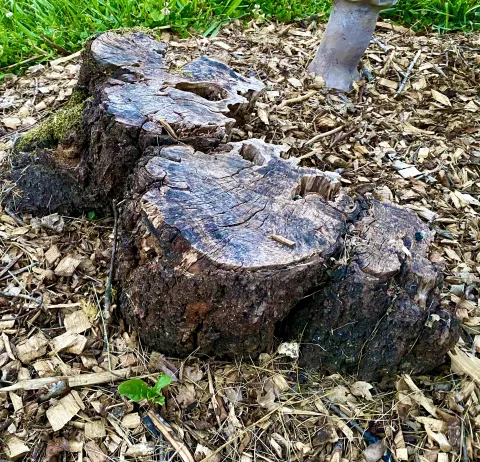Backyard Stump Removal

By: Steve Roark
Volunteer, Cumberland Gap National Historical Park
If you have a landscape with trees, you may be forced to take one down for some reason. The remaining stump is normally an eyesore, forcing many to resort to a costly stump removal service. There are solutions to the problem if you are patient
One way is to speed up the rotting process that nature uses to recycle woody debris. Get a chainsaw owning friend to cut the stump as low to the ground as possible, then use a drill to bore 1 inch diameter holes into the top of the stump, spaced 3 to 4 inches apart and 6 to 8 inches deep. Dig up a bucket of woods dirt, which contains wood-digesting microbes that lawn soil doesn't have. Add some ammonium nitrate or manure to the dirt for extra nitrogen, and cover the stump with the mixture. Unless the wood is very decay resistant, the stump should decay out in a year or two and you'll have a nice pocket of soil for a new landscape plant. It takes some careful work but you may be able to make crisscross cuts with a chainsaw (leave the outer edge) to slightly below ground level, and then take a hatchet and carefully chop the remaining columns of wood down level with the soil and then simply cover it over. This won’t work if there are a lot of big surface roots.
Another solution for stumps is to adapt them to be more visually appealing. Here are a few ideas: Cut the top of the stump off level, and use it as a pedestal for a birdbath, sundial, or sculpture. If the stump is a decay resistant wood such as oak, leave it tall and carve it into a rustic statue with a wood chisel. This one requires some skill, but doesn't have to be fancy. Hollow the stump out with a chainsaw and fill it with water to serves as a birdbath. Hollow out and fill it with dirt and use it as a planter. Creeping groundcovers like periwinkle or ivy would do nicely.
A good book on gardening and landscaping is Great Garden Shortcuts, a Rodale Press book by Joan Benjamin.
- Log in to post comments